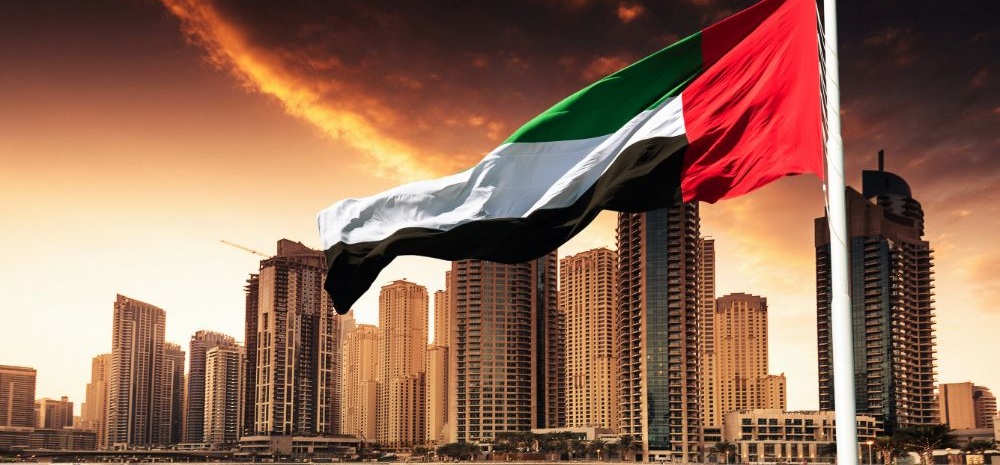Exploring UAE National Symbols: Their History, Significance, and Fascinating Facts
Tuesday, 6 August 2024
National Symbols of the UAE
Prior to the unification of the UAE, the seven emirates—Abu Dhabi, Dubai, Sharjah, Ajman, Fujairah, Ras Al Khaimah, and Umm Al Quwain—were collectively known as the Trucial States. The visionary leadership of H.H. Sheikh Zayed bin Sultan Al Nahyan of Abu Dhabi and H.H. Sheikh Rashid bin Saeed Al Maktoum of Dubai played a pivotal role in transforming these sheikdoms into the emirates of the UAE. This unification marked the birth of a new nation, necessitating the creation of distinct symbols and emblems to represent the federal union.
Table of Contents
- THE NATIONAL FLAG OF THE UAE
- THE UAE NATIONAL ANTHEM
- National Emblem of the UAE
- National logo of the UAE
- UAE Currency
- National Bird of the UAE
- National Animal of the UAE
- National fruit of the UAE
- Frequently asked questions
THE NATIONAL FLAG OF THE UAE
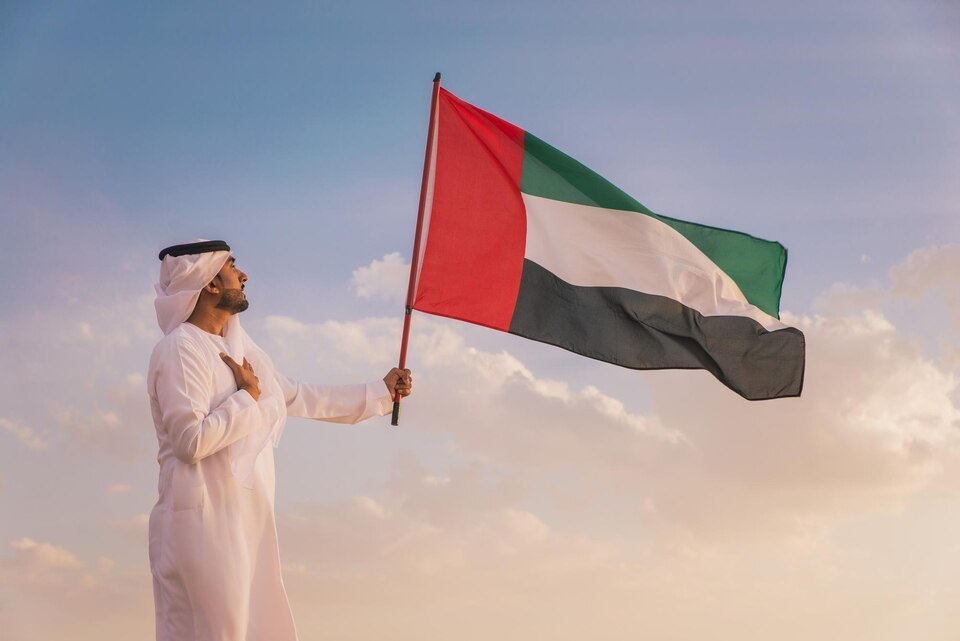
The most important national symbol of any country is the flag. The UAE flag, also known as the Emirati flag, has an interesting history of how it came to become one of the most prominent national symbols of the UAE. After the federal union was formed in 1971, a national flag UAE designing competition was announced via the Al Ittihad newspaper. Over 1,000 designs were submitted, from which only six were shortlisted. Eventually, the four-colour flag we see today was chosen as the winner. It was designed by a young Emirati named Abdullah Mohammad Al Maena, whose designs were inspired by Saiful Deen Al Goll’s poem on Arab Unity. He was awarded AED 4k for his design. The poem described the colours used in the UAE flag: White for good deeds (peace), green for fertile plains (growth and prosperity), black for the darkness of battles (courage and power) and red for swords (sacrifice and bravery).
THE UAE NATIONAL ANTHEM
The UAE national anthem is called the Ishi Biladi, meaning “Long live my nation.” Just as works on the UAE flag came into existence, Mohammad Abdul Wahab, a famous Egyptian composer, was tasked with composing the UAE national anthem. The lyrics were later written in 1986 by poet and scholar Arif Al Sheikh Abdullah Al Hassan, after which it was officially adopted as the UAE national anthem.
National Emblem of the UAE
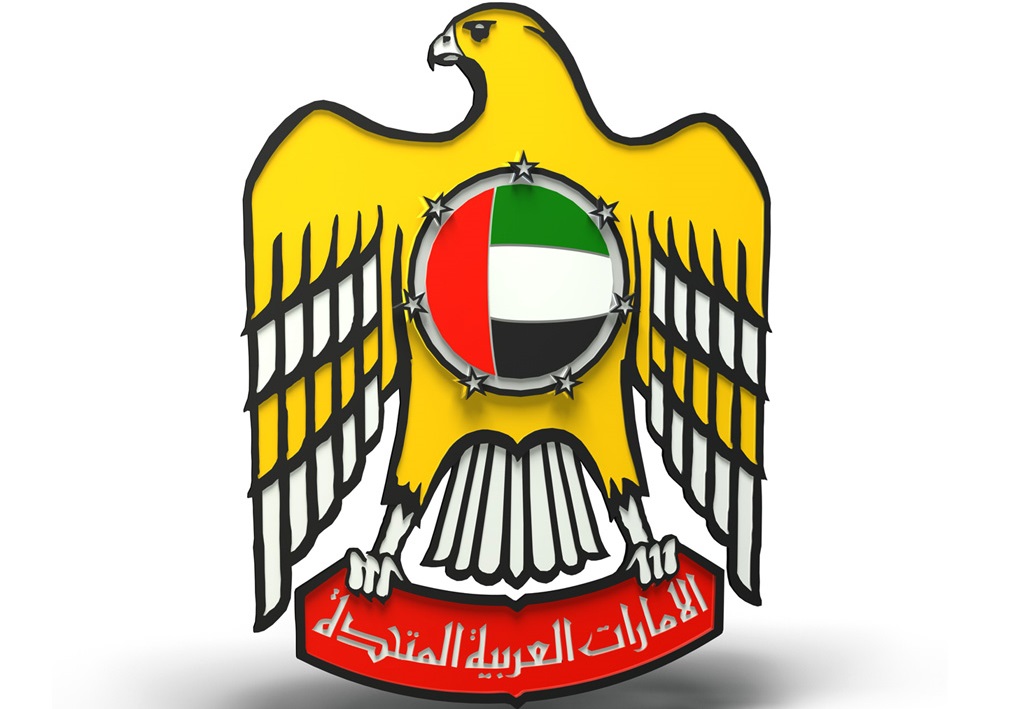
The national emblem of the UAE, also known as the UAE Coat of Arms, features a falcon holding a UAE flag at its core. The falcon symbolizes strength and heritage, while the flag, surrounded by seven stars, represents the unity of the seven emirates.
Initially adopted in 1971, the emblem featured a sailing dhow at its center instead of the UAE flag and stars. In 2008, the emblem was redesigned to better reflect the UAE’s progress and the collective strength of the emirates.
National logo of the UAE
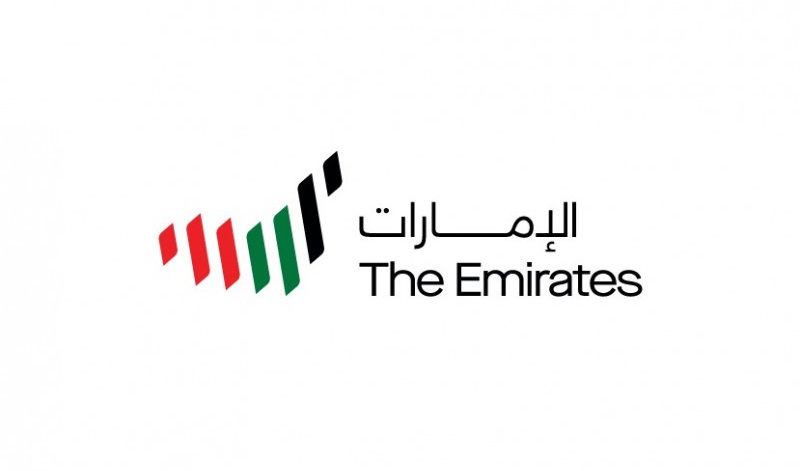
The national logo of the UAE, known as “7 Lines,” represents the seven emirates of the nation. These lines stand tall and resolute, symbolizing the unity and enduring spirit that the UAE’s founders envisioned for the country.
UAE Currency
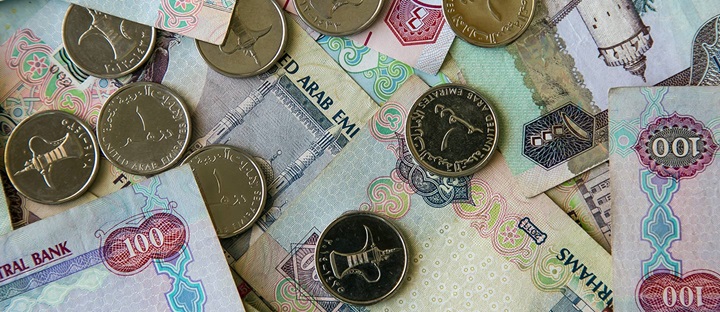
The official currency of the UAE is the Emirati Dirham, abbreviated as AED, Dh, or Dhs. The Arabic symbol for the Dirham is د.إ.
The term “Dirham” has historical roots in the trading practices of the Ottoman Empire. It was officially adopted as the UAE’s currency on May 19, 1973, replacing the Qatar and Dubai riyal. UAE Dirham coins and banknotes prominently feature national symbols on both sides. For a deeper understanding of the UAE currency symbols and their meanings, refer to our comprehensive guide.
OTHER UNITED ARAB EMIRATES SYMBOLS
National Bird of the UAE
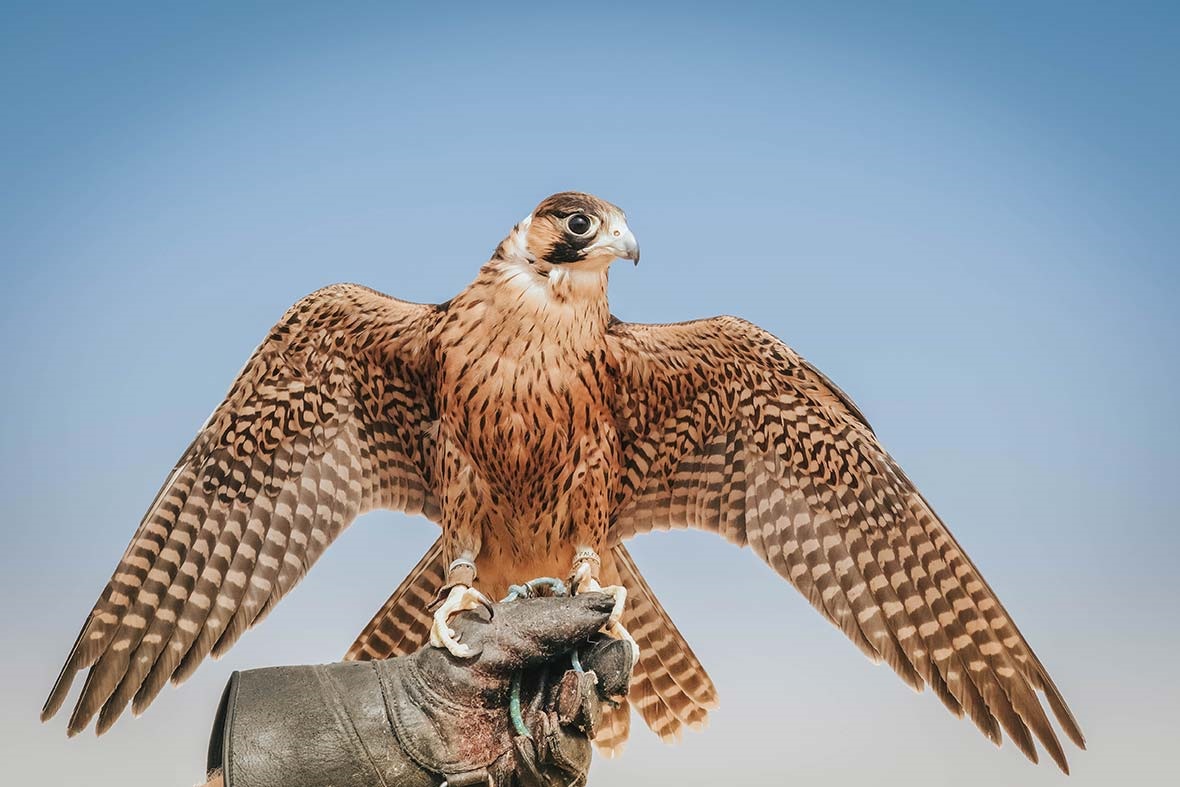
The falcon is the national bird of the UAE, embodies the spirit of agility and tradition. A fitting symbol given its deep connection to Emirati culture and traditions. Falconry is a prominent aspect of the UAE’s heritage, and the falcon represents strength, agility, and national pride. This majestic bird features prominently on the UAE emblem and is depicted on many banknotes, symbolizing the country’s historical and cultural values.
National Animal of the UAE
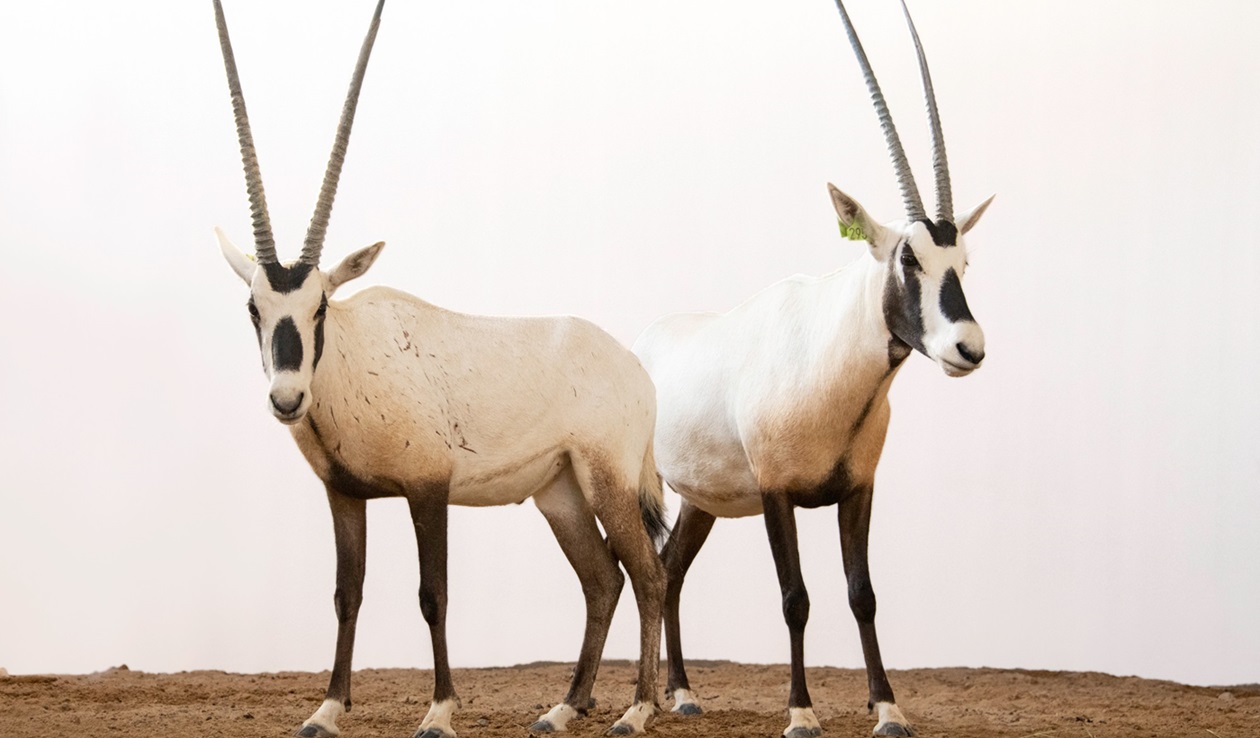
The Arabian Oryx, known as “Al Maha” in Arabic, is the national animal of the UAE. Despite common misconceptions, the camel is not the national animal; it is, in fact, the Arabian Oryx. This majestic creature was once considered extinct in the wild but has been successfully reintroduced through preservation efforts by Saudi Arabia and the UAE. The Arabian Oryx is also featured on the obverse of the 50-dirham note, underscoring its significance. The Arabian Oryx stands as a symbol of resilience and conservation efforts in the UAE.
National fruit of the UAE
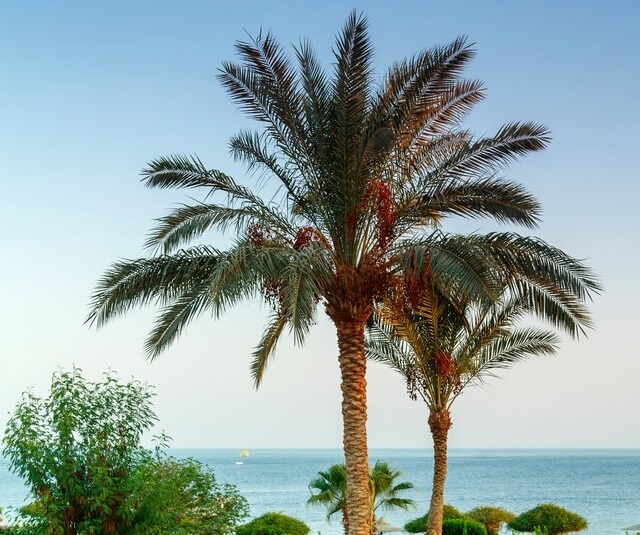
Dates are the national fruit of the UAE. They grow abundantly in the region and are a staple in various Emirati dishes, reflecting the fruit’s importance in local cuisine and culture.
Frequently Asked Questions (FAQs)
What are the national symbols of the UAE?
The national symbols of the UAE include the falcon as the national bird, the Arabian Oryx as the national animal, and dates as the national fruit. The UAE emblem and the Dirham currency also feature national symbols that represent the country’s heritage and values.
Why is the falcon considered the national bird of the UAE?
The falcon is the national bird of the UAE due to its deep cultural significance and its association with falconry, a traditional Emirati sport. The falcon symbolizes strength, agility, and heritage, and is prominently featured on the UAE emblem and many banknotes.
What is the significance of the Arabian Oryx as the national animal of the UAE?
The Arabian Oryx is the national animal of the UAE because it represents resilience and the success of conservation efforts. Once considered extinct in the wild, the Arabian Oryx has been successfully reintroduced through joint preservation efforts by the UAE and Saudi Arabia. It is also depicted on the 50-dirham note.
Why are dates the national fruit of the UAE?
Dates are the national fruit of the UAE due to their historical and cultural importance in the region. They grow abundantly in the UAE and are a staple in Emirati cuisine, used in various traditional dishes and as a symbol of hospitality.
Where can I see the national symbols of the UAE?
You can see the UAE’s national symbols in several places. The falcon appears on the UAE emblem and many banknotes. The Arabian Oryx is featured on the 50-dirham note. Dates are a common ingredient in Emirati cuisine, reflecting their cultural significance.


